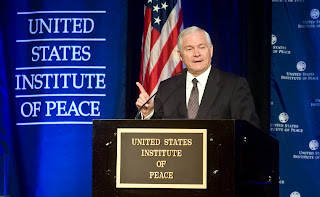
With the inauguration of President-elect Obama a scant 4 weeks away, much is being written about the projected pullback of ‘combat troops’ from major cities by June 30, 2009.
A typical article appeared in the NY Times on December 21 – “With Pullout Deadlines Comes Effort to Redefine Role of US Military in Iraq” (see http://www.nytimes.com/2008/12/22/washington/22combat.html?_r=1&scp=1&sq=%22With%20Pullout%20Deadlines%22&st=cse)
While no one would doubt that ‘some’ troops will have to remain in Iraq beyond the June date, there are no exact figures. One expert quoted by the Times predicted that “roughly 10,000 American troops should remain in Baghdad after next June, with thousands more in other cities around the country”.
What does this mean for PSYOP?
For starters it looks like dispersed US forces will be housed in garrisons discretely positioned outside cities, yet poised to apply lethal force when needed. If anything, the need for information engagement is now increased and the resources to support it, especially security have become more attenuated.
DOD has touted the overall training provided to the Iraqi Army, but it is unclear exactly what kind of PSYOP or Public Affairs Officer (PAO) training has been provided. Consequently while the tactical presence may be appropriately offset by having US forces out of the cities, it does not follow that information engagement will be diminished simply because the ‘combat’ troops are not deployed inside the cities.
US CDRs at all levels down to and including companies have come to realize the importance of PSYOP and PAO. It follows that each garrison will need at least one Tactical PSYOP Team (TPT) and that these teams will have to be tied together with Reachback type support to include common messages, pre-produced products and the ability to quickly respond to enemy television propaganda offensives. Needless to say the teams must be backed with reliable interpreter support, preferably from individuals who come from the area surrounding the garrison. This distributed configuration will very likely require a high level of maturity and relationship building capability than found in a normal tactical situation. This is due to the fact that the deployed US force will remain fixed and must develop long term positive relationships with their Iraqi counterparts, Iraqi media, local leaders and the population at large.
In this configuration the TPT must maintain close communication with the MNF PAO and any Iraqi personnel involved with information engagement. It is possible that the shibboleths of mixing PAO and PSYOP have not infected the new Iraqi hierarchy so that a few individuals can accomplish both missions within a single organization, however, this may not be the case so that the firewalling between PAO and PSYOP may still exist within the new Iraqi infrastructure.
The PSYOP Task Force (POTF) HQ in the post pullout world will more closely resemble a corporate marketing department than ever before as each of the cities take on the flavor of marketing regions. Hopefully doctrine, training and PSYOP/PAO work products are evolving so that the transition will be a smooth one.





























